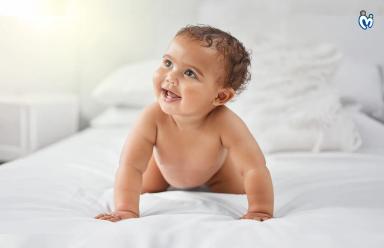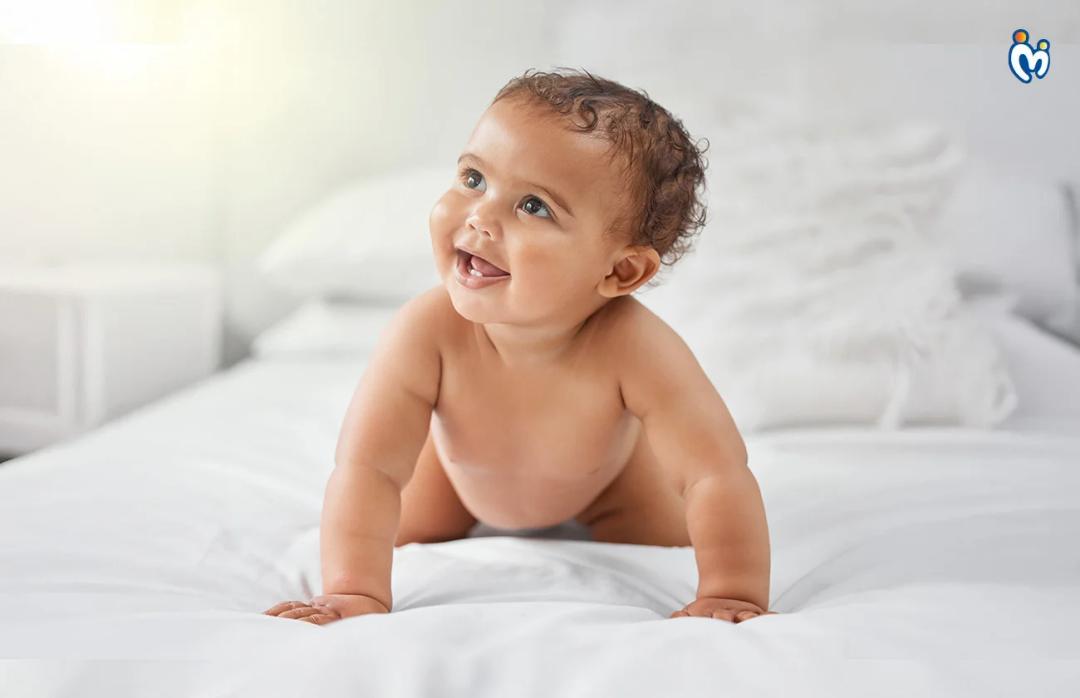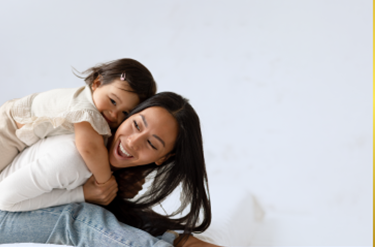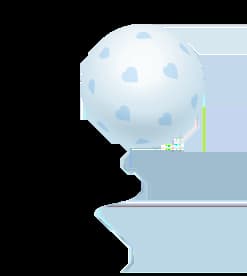In this blog, we will discuss the best sleeping positions for your baby, including the benefits and risks associated with each position. We will also provide tips on how to ensure your baby is sleeping safely and comfortably. By following these guidelines, you can help ensure that your baby gets the restful and safe sleep they need for their healthy development.
As a parent, ensuring your baby gets enough sleep is essential for their overall growth and development. One of the most important factors that contribute to a baby's quality of sleep is their sleeping position. Choosing the right sleeping position for your baby can help reduce the risk of sudden infant death syndrome (SIDS) and other sleep-related issues.
There are several sleeping positions that parents can choose for their babies, including the back, side, and stomach positions. However, experts recommend placing babies to sleep on their backs as it is the safest position and reduces the risk of SIDS. The back sleeping position also helps ensure that the baby's airway is clear, and they are less likely to suffocate.
It's important to note that parents should not place any loose bedding, such as blankets or pillows, in the baby's sleeping area, as these can pose a suffocation risk. Instead, parents can use a firm and flat mattress with a fitted sheet to ensure their baby is sleeping on a safe surface.
While the back sleeping position is the safest, some babies may find it uncomfortable or have medical conditions that require a different sleeping position. In these cases, parents should consult with their doctor to determine the best sleeping position for their baby.
In conclusion, ensuring that your baby gets a good night's sleep is essential for their growth and development. Remember, every baby is different, and what works for one may not work for another. It is always important to consult with your pediatrician if you have any concerns about your baby's sleeping habits or if you notice any changes in their behavior. With the right care and attention, you can help your little one get the restful and restorative sleep they need to thrive.
Back Sleeping Position
The back sleeping position is the safest and most recommended position for babies under twelve months. This position helps ensure that the baby's airway is clear, and they are less likely to suffocate. It is also the position that has been associated with the lowest risk of SIDS. Place your baby on their back to sleep, and avoid any soft bedding, pillows, or stuffed animals in the crib.
There are a few risks involved in using the sleeping on the back position. If the baby remains on the back for a long duration, it may result in the flattening of the back of the skull. This will become normal by the time they turn twelve months old and does not require any treatment. This can be fixed naturally by increasing the tummy time of the baby during waking hours and making the baby rest on the other side of the head. Reducing the time spent by babies in carriers or car-seats can also help in getting the shape of the head back to normal. Changing the direction of the baby while they are in the crib may also help.
Side Sleeping Position
The side sleeping position can also be a safe position for babies, but it is not as safe as the back sleeping position. Some studies suggest that the side sleeping position may increase the risk of SIDS, especially if the baby rolls onto their stomach during sleep. If you choose to place your baby on their side to sleep, be sure to monitor them closely and ensure that they cannot roll onto their stomach. You can hold them on their left side while awake if they are struggling with gas problems but make sure they lie on their back while sleeping.
Stomach Sleeping Position
The stomach sleeping position is the least safe position for babies, as it has been associated with an increased risk of SIDS. It can also increase the risk of suffocation by putting pressure on the jaw and blocking the baby’s airway. The baby will have its face close to the mattress and sheet and breathe in microbes that may be present. If the mattress is too soft there is a danger of suffocation for these reasons, it is not recommended to place your baby on their stomach to sleep.
Tips for Safe Sleep
No matter which sleeping position you choose for your baby, there are some tips you can follow to ensure their safety and comfort:
- Always place your baby on a firm and flat surface, such as a crib mattress, and avoid soft surfaces like couches or adult beds.
- Use a fitted sheet and avoid any loose bedding, such as blankets or pillows, in the baby's sleeping area.
- Keep the room at a comfortable temperature, around 68-72 degrees Fahrenheit.
- Place your baby to sleep in their own crib or bassinet in the same room as you for at least the first 6 months.
In conclusion, choosing the right sleeping position for your baby is an important decision that can impact their safety and overall quality of sleep. The back sleeping position is the safest and most recommended position for babies under twelve months. If you have any concerns or questions about your baby's sleeping position, be sure to consult with your doctor. By following these guidelines and tips, you can help ensure that your baby gets the restful and safe sleep they need for their healthy development.
Use Mamy Poko Pants diapers to keep your baby dry and comfortable so that they can have an undisturbed sleep. A safe sleep routine can work wonders for your baby’s growth and well being especially in the first twelve months. Make sure you are aware of the dangers associated with wrong sleeping positions and make sure you use the right one for your baby at all times. Being aware of what is best for your baby can prevent fatal accidents and help you enjoy this exciting phase of your life.
FAQ's
Q. What is the best sleeping position for a newborn baby?
Ans.The best and safest sleeping position for a newborn is on their back. This position greatly reduces the risk of Sudden Infant Death Syndrome (SIDS), as it keeps the baby’s airway open and prevents suffocation. It’s recommended by pediatricians worldwide for babies up to one year of age.
Track your baby’s monthly development milestones using the Baby Growth Calculator to ensure healthy progress alongside safe sleep habits.
Q. Why is sleeping on the stomach dangerous for babies?
Ans. Sleeping on the stomach increases the risk of SIDS because it can lead to restricted airflow, re-breathing exhaled air, and overheating. This position can also put pressure on the baby’s jaw, narrowing the airway and making it harder for them to breathe.
Q. Is side sleeping safe for newborns?
Ans. Side sleeping is not recommended for newborns because babies can easily roll onto their stomachs from this position. They also lack the muscle strength to reposition themselves safely, increasing the risk of suffocation and SIDS.
Q When can a baby safely sleep on their stomach?
Ans. Once your baby can roll over both ways (from back to front and front to back) on their own—typically around 4–6 months—it’s safe to let them sleep in the position they choose. However, you should always put them to sleep on their back initially, even after they start rolling.
Q. How can I ensure my baby sleeps safely at night?
Ans. Follow these safe sleep practices:
- Place baby on their back to sleep
- Use a firm mattress with a fitted sheet
- Avoid pillows, blankets, soft toys, and bumpers in the crib
- Keep the baby’s sleep space clutter-free
- Share a room, but not a bed, for at least the first 6 months
Q. Why is a firm mattress recommended for babies?
Ans. A firm mattress supports the baby’s body without sinking and helps keep the airway unobstructed. Soft surfaces can increase the risk of suffocation or overheating. A flat, firm surface ensures the baby's spine and neck stay aligned and supported.
Q. What should a baby wear while sleeping to stay safe and comfortable?
Ans. Dress your baby in lightweight, breathable layers. Avoid overdressing to reduce the risk of overheating, which is a known contributor to SIDS. A sleep sack or wearable blanket is a safer alternative to loose blankets.
Q. Can co-sleeping with a baby be dangerous?
Ans. Yes, bed-sharing increases the risk of suffocation, strangulation, and SIDS, especially if:
- The bed has soft mattresses or pillows
- The parent is overtired or under the influence of medication or alcohol
- Room-sharing (keeping the baby in the same room but in a separate crib) is the safer alternative.
Q. How long should I follow back-sleeping guidelines for my baby?
Ans. You should place your baby on their back to sleep until they are at least 1 year old. After that, if they roll or move into another position on their own, you don’t need to reposition them back.
Q. What should I do if my baby rolls over during sleep?
Ans. If your baby has started rolling over on their own, there’s no need to worry or constantly reposition them. Just make sure the sleep area is safe, and continue putting them to sleep on their back at the start of every nap or bedtime.

















